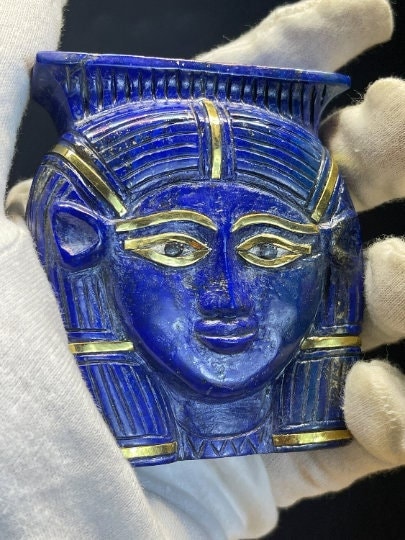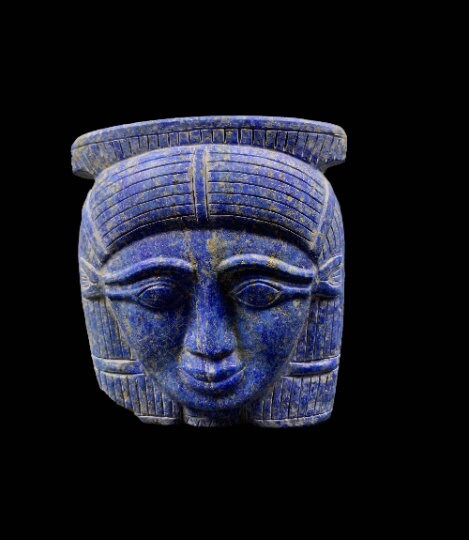Handmade White ALABASTER Candleholder – Double-sided Painting (Eye of Ra – Winged Scarab) – Used for Spiritualism – Handmade in Egypt.
$87
your amazing flower vase with the beautiful Egyptian hand made from Alabaster stone , you can use it as a home décor or a candle holder to decorate your beautiful home with an amazing Egyptian taste, special made for the vases lovers 😉
a unique piece you will never find it anywhere 😉
This item is 100% handmade with love and passion by the best sculptors of our family.
�����: Pharaohswebstore.
���� �����������:
This is a white alabaster vase, handmade from Egypt with paintings on both sides of the vase.
The first painting is the eye of Ra. (The eye is represented in amulets capable of repelling all negative energy and restoring harmony. That’s why the pharaohs used them to defend themselves against any element or enemy that tried to destabilize their government.)
The second painting is the winged scarab. (This kind of beetle was highly symbolic to ancient Egyptians, it represented rebirth and renewal. They believed that the sun was pushed across the sky every day by a giant scarab, the god Khepri)
�️ ���� �� ����� �️
�������:
Alabaster can draw forgiveness, whether it be you that needs self-forgiveness or the ability to forgive someone that has done you wrong.
It also draws energy from other stones as well, meaning you can “soak” up the energy of one stone and have the properties of both stones with you while only carrying the alabaster.
It helps to draw anger out of a person and release it to the light.
This stone is the “alabaster” of the ancient Egyptians and Bible and is often termed Oriental alabaster since the early examples came from the Far East.
The Greek name alabastrites is said to be derived from the town of Alabastron in Egypt, where the stone was quarried.
The locality probably owed its name to the mineral; the origin of the mineral name is obscure.
The “Oriental” alabaster was highly esteemed for making small perfume bottles or ointment vases called alabastra; the vessel name has been suggested as a possible source of the mineral name.
In Egypt, craftsmen used alabaster for canopic jars and various other sacred and sepulchral objects.
A sarcophagus discovered in the tomb of Seti I near Thebes is on display in Sir John Soane’s Museum, London; it is carved in a single block of translucent calcite alabaster from Alabastron.X
Material:
Alabstar Stone
- From Egypt
- Additional information
Egyptology Store Policies
Shipping Costs
Free
Estimated Arrival
5-10 Days
Payments



Returns & Exchanges
If you are not 100% satisfied with your purchase, you can return the product and get a full refund or exchange the product for another one (only pay the shipping cost).
You can return a product for up to 14 days from the date you received it.
Any product you return must be in the same condition you received it and in the original packaging. Please keep the receipt.
Customs & Import
All customs fees and importing fees are covered by the customer. Please contact us for more information if you aren't sure about the custom and import fees in your country.
From the Heart of Egyptto Your Home
Additional information
| Material | Alabstar Stone |
|---|---|
| Width | 7.4 inches |
| Height | 5.3 inches |
| Depth | 7.4 inches |


























What others are saying
There are no contributions yet.